Sinusitis at home. Washing the nasal cavity. Features of the treatment of sinusitis folk remedies.
Sinusitis is a type of sinusitis in terms of location. The disease is an inflammation of the mucous membrane of the maxillary sinus. Otherwise, this sinus is called the maxillary sinus, hence the name of the disease.
The disease is equally common among both children and adults. And, as a rule, it develops against the background of neglected or ignored rhinitis and a number of ailments.
____________________________
Causes and symptoms
The danger of sinusitis lies mainly in the long incubation period, which is associated with the anatomical features of the structure of the maxillary sinuses. Therefore, there are two stages of the course of the disease - acute and chronic. Depending on this, the symptoms of sinusitis manifest themselves in different ways, as well as the depth of tissue damage.
The main causes of sinusitis:
- Chronic rhinitis
- Infectious and bacterial diseases
- Diseases of the teeth, especially the upper
- Weakened immunity
- allergies
- Nose injury
- Polyps in the nasal cavity, etc.
Symptoms of acute sinusitis:
- Nasal congestion with expectoration of thick mucous and opaque sputum.
- Sneezing.
- Increased body temperature, accompanied by chills and pain in the temples, frontal part of the face, which gives to the root of the nose and teeth.
- All symptoms of acute respiratory infections and influenza.
- Swelling under the eyes and around the sinuses.
Symptoms of chronic sinusitis:
The first symptoms of chronic sinusitis are not clearly expressed, which causes late treatment. After some time, a new wave of exacerbation begins, which is accompanied by the following symptoms:
- Persistent nasal congestion, which is not amenable to traditional treatment.
- Isolation of purulent masses.
- Deterioration general condition and well-being.
- Dullness of smell and memory impairment.
- development of conjunctivitis.
- Swelling of the eyelids in the morning, puffiness.
- Pain in face extending to nose and teeth.
If you ignore these symptoms, the damage to the blood vessels located in the mucous membrane of the maxillary sinus gradually begins, the damage to the bone tissue in the region of the maxillary sinuses. In addition, complications such as meningitis, encephalitis, ophthalmitis and others may develop.
Based on this, it is very important to start immediate treatment of sinusitis. known different ways treatment of sinusitis, each of which is effective when used correctly. In addition, timely treatment with proven methods will eliminate the need for surgery.
Method one: Folk
This method is suitable at the first signs and symptoms of sinusitis. It is simple and effective, allows you to treat the disease at home.
How to treat sinusitis at home?
As part of the folk method of treating sinusitis, juices and infusions of various plants are used. Also effective in this case are bee products, butter, milk and alcohol. Accordingly, there are many recipes for preparing home remedies to cure sinusitis.
Recipe 1. Mixtures for washing
To quickly cure sinusitis, it is very important to ensure the discharge of sputum. To do this, it is best to rinse the nasopharynx. This can be done either with plain purified water, or with a mixture of juices or herbal infusions.

Recipe 2. Healing drops from vegetable juices with honey
Mix the juice of blue onion and potato, taken in equal amounts, and add the same amount of melted honey. Stir until smooth and instill with a runny nose and initial stage sinusitis several times a day.
Ready-made drops can be stored in the refrigerator for several days, so they can be prepared for the future for the entire course of treatment, which is no more than a week.
Recipe 3. Decoction of bay leaf
This recipe is one of the most effective. He helped many to cure chronic recurrent sinusitis, which has been going on for more than a year.
Pour 3 large bay leaves with water so that it completely covers the raw material. Put on fire and bring to a boil. As soon as the water boils, remove the container from the stove. As soon as the broth has cooled, soak a clean napkin in it. Then attach it to the bridge of the nose and the frontal part. Keep the napkins until cool, then repeat several more times until the decoction is exhausted (3-5 procedures).
The course of treatment with this remedy is 6 days.
Recipe 4. Drops from blueberry juice
To prepare this effective remedy, you need to dig up the bulbs of the blueberry. Wash them and squeeze out the juice. Dilute the resulting juice with water in a ratio of 1: 1 and drip three drops into each nostril.
For the greatest effectiveness of this recipe, it should be combined with drops from calendula tincture.

Recipe 5. Drops from calendula tincture
Dissolve 35 drops of alcohol tincture of calendula in 250 ml and add a teaspoon of fine salt. Stir until the salt dissolves and fill the syringe with the solution. Inject 10 ml of solution into each nostril 2 times a day.
The course of treatment with a combination of this recipe with the previous one is 2 weeks.
Recipe 6. Glycerin drops with mummy
Drops that are very easy to prepare will help to effectively treat sinusitis in a folk way at home.
Dissolve a teaspoon of glycerin in 4 teaspoons of water, add 10 tablets (0.2 g each) of mummy. Stir until the components are completely dissolved and instill the nose 3 times a day.
The course of treatment is 3 weeks, after which it takes a five-day break and again continues therapeutic instillation of the nose.
Recipe 7. Cyclamen
Cyclamen is a famous plant in the treatment of sinusitis and other "nasal" diseases. This is due to its ability to remove mucus from the body, due to which purification occurs. And since large accumulations of mucus, sputum in the sinuses increase inflammation, their removal means recovery. At home, drops and ointment are prepared from this plant.
Drops from cyclamen root juice
To prepare a remedy, you need to wash and grate the cyclamen root. Squeeze out the juice, dilute with water and refrigerate to infuse.
After the mixture is infused, drip 2 drops into each nostril and lie down to rest for 10 minutes. Then drink honey decoction.
Within three days, significant results will be noticeable.
Ointment from cyclamen root juice
Grate the root and squeeze out the juice. Mix it with Kalanchoe juice, onion and aloe juice. Add Vishnevsky's ointment and mix until smooth.
In the resulting ointment, soak small swabs and lay in the nostrils for half an hour. Apply daily for 3 weeks.
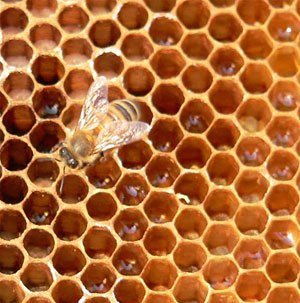
Recipe 8. Wax from sinusitis
The value and healthfulness of bee products is relevant in the treatment of most diseases. And sinusitis is one of those diseases in which these products have a significant improvement in health and speed up recovery.
This recipe is about wax.
Voshchina (honey zabrus) are wax caps and honeycombs in which bees “lay” honey. The product is very valuable and affordable (you can buy it from beekeepers or in stores that sell honey).
To cure sinusitis, you need to chew a tablespoon of honeycomb for half an hour before meals. This must be done daily from September 1 to May 31.
It is wax that gives the therapeutic effect, and not honey, which is quickly eaten. And it comes by strengthening the immune system of the body. After all, honey and other bee products are immunomodulators and stimulants.
Recipe 9. Inhalation with kombucha vapor
The value of kombucha for health is known to almost everyone, and it is difficult to overestimate it. It is also possible to treat sinusitis in the first stages with kombucha, using its vapors for inhalation and instilling “tea” into the nose.
Heat the red brick, then pour it with infusion of kombucha. The vapors that it will exude must be inhaled smoothly. For the greatest effect, bend over a brick, cover yourself with a large terry towel and inhale the vapors.
After this procedure, drink half a glass of kombucha infusion and drip three drops into each nostril. After that, go to bed.
Perform the procedure every night before bed for 3 weeks.
Helpful Hints:
- Tip 1. Alternative treatment at home is valid only in the initial stages of the development of sinusitis. And if this does not bring results, you need to urgently seek medical help so as not to start the disease and do not have to have an operation.
- Tip 2. If any folk drug worsens your health or provokes an allergy, stop using it and contact the clinic.
- Tip 3. Observe hygiene standards during procedures and in general. This will help prevent the involvement of bacteria in the inflammatory process, which will prevent the condition from worsening.
Method two: Medication
As a rule, after diagnosing sinusitis, it is prescribed drug therapy antibacterial and antibiotic drugs. The latter are prescribed only if other drugs have failed.
The most popular antibacterial and anti-inflammatory agent for the treatment of sinusitis are Sinuforte drops. Their basis is cyclamen juice, the value of which we mentioned earlier. By the way, we add that cyclamen, along with its efficiency and speed, is a strong allergen. Therefore, you need to take this remedy after consulting a doctor.
The most popular antibiotics for the treatment of sinusitis are:

- Ampicillin
- Penicillin
- Cefazolin
Stronger antibiotics that are prescribed by a doctor to treat a severe course of the disease are:
- Azithromycin
- macrofoam
- Zitrolide
Any drug is prescribed exclusively by a doctor after a proper examination. Self-medication with these drugs can harm your health. And their uncontrolled "eating" can cause a deterioration in the condition - the appearance of nausea, vomiting, upset stools, allergic reactions and nosebleeds.
Recall that the antibiotic suppresses not only the pathogenic flora, but also the vital one. Therefore, it is important to take these drugs under the supervision of a doctor.
Helpful Hints:
- Tip 1. Despite the availability of many drugs for the treatment of sinusitis in the free market, you should not engage in self-prescription. Only diagnostics and a qualified doctor will help you choose an effective and harmless drug.
- Tip 2. If the drug you are taking worsens your health or provokes an allergic reaction, stop taking it and immediately contact the doctor who prescribed the drug. If necessary, it is necessary to undergo additional diagnostics. This will help to maintain health, avoiding the sharpening of the disease.
- Tip 3. Take any prescribed drug strictly according to the instructions or prescription of the doctor. The drug will have the claimed effect only in the proposed dosage. Failure to comply with the dosage and regimen of medication is fraught with serious consequences.
Method Three: Physiotherapy
Physiotherapeutic treatment of sinusitis has been known for a long time and is still very popular today. The method is a set of procedures carried out using various devices in order to enhance the effect of medications or home remedies.
For the treatment of sinusitis, the following physiotherapeutic procedures are effective:
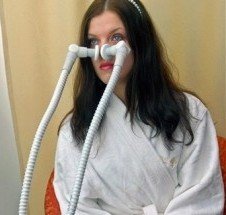
Helpful Hints:
- Tip 1. Physiotherapy can be prescribed as the only treatment only at the first signs of sinusitis. In other cases, it is effective only in combination with other procedures. Therefore, stick to the doctor's prescription and combine physiotherapy with other therapeutic measures.
- Tip 2. If you feel unwell after the procedure, inform the doctor about it and he will review his appointment, establish the cause of poor health. Perhaps this is a physiological reaction to the procedures.
- Tip 3. After physiotherapy procedures, you should relax a bit. This will improve the healing effect and speed up recovery.
Method Four: Prevention
The best way to treat is to prevent the disease and carry out regular prevention. This is especially important for people with reduced immunity and a tendency to diseases of the upper respiratory tract.
The main prevention is as follows:

Useful advice: Prevention in all cases The best way treatment. It is also the most accessible, understandable, simple and safe way for everyone. Therefore, you should not ignore it to prevent sinusitis and its complications.
Video
After a cold that has been transferred on the legs or not completely cured, with an unimportant condition of the upper teeth, fungus, a deviated nasal septum, an inflammatory process may develop in the mucous membrane of the sinuses. It is necessary to start treatment of sinusitis as early as possible so that the disease does not become chronic. Self-diagnosis at home is not worth it. Need to contact otorhinolaryngologist, ENT doctor. With timely treatment, it is possible to avoid a puncture by taking prescribed medications and regularly washing the nose.
What is the difference between sinusitis and sinusitis
If inflammation occurs in the paranasal sinuses, called in Latin sinus, which is denoted by the suffix –it, this pathology is called. With maxillary sinusitis, inflammation is localized in the sinus from the left or from right side nose above the upper jaw.
The bottom of the maxillary sinus is located near the roots of the upper teeth. It happens that the roots are separated from the sinus by one mucous membrane.
With the nasal cavity, each sinus of the upper jaw is connected fistula, through which continuously produced mucus is removed, moisturizing and protecting the inner surface of the sinus from infection, as well as the mucosa of the anastomosis itself.
For various reasons, the mucosa becomes inflamed, causing partial or complete clogging of the anastomosis. As a result, mucus begins to accumulate inside the left or right sinus, promoting the growth of pathogenic bacteria and causing the need for treatment of sinusitis.
Symptoms of sinusitis

signs inflammatory process in the sinuses are largely similar. Pain near the eyes and nose is considered a characteristic symptom of sinusitis.
Allocations are transparent or with a yellowish tint. Due to the fact that the mucosa swells and clogs anastomosis communication with the nasal cavity is difficult.
Common symptoms of maxillary sinusitis are shortness of breath, weakness, loss of appetite, and fever.
List of common signs and symptoms of sinusitis:
- discomfort near the nose;
- pain in the cheeks, under the eyes;
- decreased ability to recognize odors;
- headache in the late afternoon;
- malaise.
Preventive measures so that you do not have to treat sinusitis

To reduce the likelihood of the disease, the following preventive measures must be observed:
- strengthen immunity;
- timely treat colds and SARS;
- prevent colds;
- timely heal caries;
- if the cause of sinusitis is a deviated nasal septum, you can think about eliminating this defect.
In case of illness, a sufficient amount of fluid must be supplied to thin the sputum. Tobacco smoke is an irritant for the mucous membrane of the maxillary sinuses, which facilitates the penetration of infection. Alcohol abuse contributes to the formation of mucosal edema inside the sinus.
Even at home, you can harden, it does not take much time. It is worth keeping track of your fitness, regularly visiting the gym or doing physical education on your own at home. Increased blood flow during sports helps prevent the appearance of signs of sinusitis, further strengthens the immune system.
Symptoms of sinusitis will not appear if you normalize the diet, get enough vitamins, micro and macro elements, periodically cleanse the intestines from accumulated harmful substances. A healthy cleansing procedure should be performed at least once every six months.
When to treat sinusitis of the maxillary sinuses

As a rule, the need for treatment of sinusitis is caused by an infection that has entered the nasal cavity with inhaled air, through the circulatory system, while swimming in a polluted reservoir, through diseased upper teeth.
Cause sinusitis flu viruses, adenoviruses, fungal. Often pathogens pneumococci, staphylococci long time . As long as the immune system is strong, they do not manifest themselves in any way. But as soon as a common cold happens, they become active and cause inflammation of the mucous membrane inside the maxillary sinuses.
Symptoms of sinusitis are detected when the immune system is weakened due to the presence of chronic diseases flowing in the body. It is necessary to perform the treatment of sinusitis after colds, acute respiratory infections, runny nose when the nasal mucosa becomes inflamed.
Cause odontogenic sinusitis considered inflammation of the teeth of the upper jaw. Pathogenic bacteria adhere to the mucous membrane of the maxillary sinus through the diseased roots of the teeth, as well as during the formation fistula, a narrow canal connecting the sinus and oral cavity.
It is not so rare that during the treatment of teeth after the removal of the root, a filling material is found inside the sinus. Of course, this is not desirable, but it is not dangerous either. Inflammation of the mucosa develops only in some cases.
home remedies for sinusitis
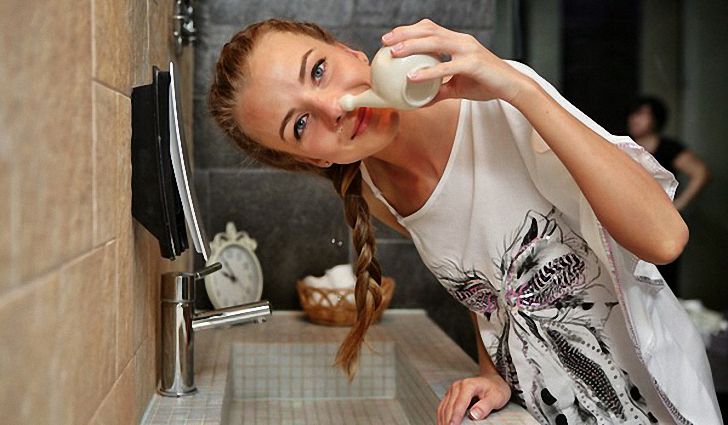
For the treatment of various forms of the disease, the doctor prescribes vasoconstrictor drugs that eliminate mucosal edema, for example, Naphthyzin, For the nose, Nazivin. The dosage form can be a gel, drops, spray.
Antibiotics, antiallergic drugs (for example, Claritin).
How to rinse your nose with an antiseptic solution
At home, the treatment of sinusitis is supplemented by washing the sinuses with an antiseptic solution. For example, Furacilin, suppressing streptococci and staphylococci. Half a tablet Furacilina crushed and dissolved in half a liter of warm water. Treatment can also be performed with saline at the rate of 1 tsp. salt in a glass of warm water.
Leaning over the sink and turning your head slightly so that one nostril is higher, pour the liquid with a syringe into the upper nostril so that it flows out of the lower nostril. Half a liter of antiseptic solution on each side is enough.
You can pour a little solution into the palm of your hand, pinch the upper nostril, and draw the contents of the palm of your lower nostril. The tilt of the head should not be too great. Then pinch the lower nostril with your finger and tilt your head in the opposite direction. The antiseptic solution should flow out of the other nostril on its own.
After washing the nose, one should not lie on the right or left side, because bacteria and inflammation of the middle ear can penetrate with the remnants of the liquid.
Treatment of sinusitis in acute form
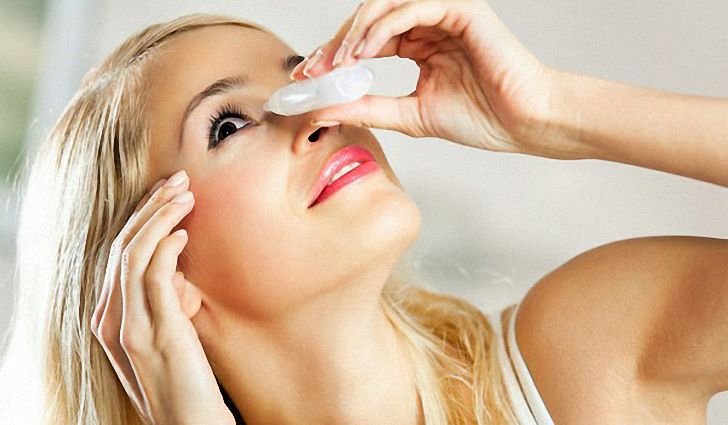
As a rule, the treatment of sinusitis is performed at home. Recovery occurs in about a month. The disease often manifests itself in autumn or spring, when it is damp outside and much more often.
Nasal congestion and other signs of inflammation of the maxillary sinuses are eliminated with the help of vasoconstrictor drugs. Also, the otorhinolaryngologist prescribes antibiotics, which makes it possible to achieve an improvement in the condition in a few days. The characteristic pain of sinusitis disappears, inflammation decreases.
Depending on the severity and neglect of the case, home treatment of sinusitis lasts several weeks to completely restore the mucosa inside the sinus.
In the presence of secretions, nasal lavages are performed. As a rule, at first the discharge is transparent, in advanced cases they become purulent, with an unpleasant odor, acquire a yellow and greenish-yellow color, sometimes with the inclusion of blood streaks.
Treatment of sinusitis in acute form is relatively easy. It is enough to rinse the nose in order to remove mucus, take the medications prescribed by the doctor.
How to treat chronic sinusitis

In the case of chronic sinusitis of the left or right maxillary sinus, the source of the disease remains in the body, causing an increased work of the immune system, which makes it weaken. With hypothermia or penetration of infection, the disease goes into an exacerbation phase.
Often, the disease passes into the chronic form due to premature suspension of treatment, when a significant relief of the painful condition occurs. It seems to the patient that he is completely cured, although in fact this is not so.
As a rule, the characteristic symptoms of sinusitis in this form are less pronounced. The nose is constantly stuffy, the ability to recognize odors is deteriorating. The main danger is a chronic inflammatory process, located in close proximity to the brain.
Home treatment of sinusitis in a chronic form is performed with antibiotics, taking them in courses as prescribed by an ENT doctor.
Puncture with sinusitis

As a rule, in the case of a chronic form during exacerbations, it is not always possible to get rid of purulent secretions by washing. You have to go for a puncture to carefully remove the pus, deliver antibiotics to the site of inflammation. Of course, this type of treatment of sinusitis at home cannot be performed, an appeal to an ENT doctor is required.
For some time, a cotton wool soaked in Lidocaine. Then it executes puncture(puncture), a strong needle is inserted through the wall of the sinus. The bone between the nasal septum and the maxillary cavity is pierced, because in this place it is the thinnest.
The procedure is completely painless, a certain psychological discomfort is associated with a characteristic crackling sound when the needle passes through the bone.
Upon completion of the puncture, a syringe is attached to the needle, which extracts purulent discharge. Then the sinus is thoroughly washed with an antiseptic solution with a syringe. You have to tilt your head forward a little so that the solution flows out through the nostril.
Upon completion, antibiotics and anti-inflammatory drugs are administered. The patient's condition improves almost immediately.
Thus, the treatment of sinusitis without a puncture is not always possible, much is determined by the form and severity of the course of the disease. As a rule, when the first signs of sinusitis appear and treatment is started in a timely manner, it is possible to do without this type of surgical intervention.
Treatment of sinusitis folk remedies
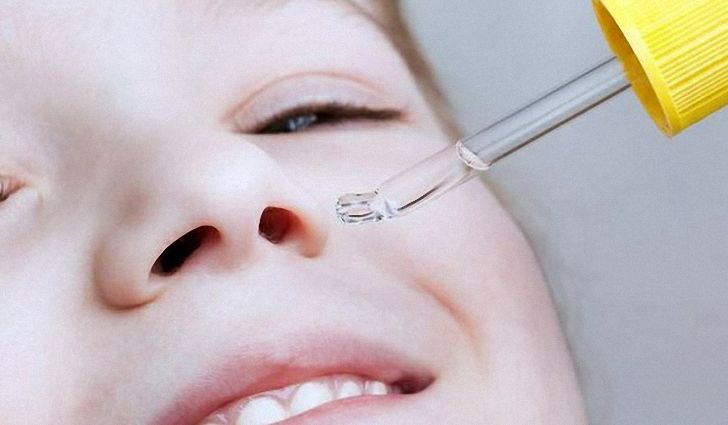
Before home treatment of sinusitis folk remedies it is necessary to consult with your doctor.
Improper self-medication causes the development of an inflammatory process, as a result of which brain tissue may be affected. You will have to make a puncture or perform a deeper surgical intervention, and in advanced cases, treatment may be ineffective.
In addition, the eyes and ears are located in the immediate vicinity of the maxillary sinus, so an incorrectly performed treatment of sinusitis at home can cause visual impairment or otitis media.
The formation of a significant amount of toxins as a result of the inflammatory process loads the organs of the excretory system. First of all, the liver and kidneys, which may not be able to cope with the increased load. Pathogens are in the tissues of the heart, causing arrhythmia and other cardio-diseases.
Folk method of treatment of sinusitis of the upper jaw by inhalation
- Inhalation jacket-boiled potatoes. Drain the water and breathe in potato steam.
- Add to hot water honey. Breathe through your nose, covering your face with a towel, until the water has cooled completely.
- Inhalation alcohol tincture of propolis. Boil a liter of water, add half a teaspoon of propolis infusion. Breathe, protecting your face with a towel folded in several layers to the bridge of your nose, be sure to cover your eyes.
Beets cure sinusitis
It is useful to rinse the nasal cavity in case of discharge. The composition is instilled into each nostril 5 drops several times a day. You can use a juicer to make juice. If there is no juicer, rub the beets and squeeze the juice with a spoon through folded gauze.
You can drink juice boiled beets. In this case, pass the root crop through a meat grinder, dilute the juice with water in equal parts, squeeze through gauze.
Treatment of inflammation of the maxillary sinuses with horseradish root
horseradish root- a wonderful remedy for home treatment of chronic sinusitis, although it will take a long time to be treated. Rinse the root thoroughly and grate. Then mix 1/3 cup of the resulting raw material with freshly squeezed juice of 2-3 lemons. The resulting thick composition is taken in 1/2 tsp. in the morning half an hour before meals for 3-4 months. After a half-month break, the next course is necessary. As a rule, seizures cease to disturb after two years.
St. John's wort cure sinusitis
AT folk way treatment of sinusitis with St. John's wort for the preparation of infusion 1 tsp. dry grass pour a glass of boiling water, insist. Strain and rinse your nose. The method is especially effective in the case of a chronic form, when there is no purulent discharge.
Alternative treatment with St. John's wort is also performed by ingestion. To do this, 20 g of grass is poured with a glass of boiling water, infused for 15-20 minutes. Take 150g hot 3 times a day for one and a half to two weeks.
bay leaf treatment recipe
The chronic form of sinusitis is treated with a folk remedy, compress from a decoction of bay leaf. Leaves pour cold water, bring to a boil. Moisten a napkin with a hot decoction and put it on your forehead and nose, cover your face with a towel. Repeat several times. Bay leaf compresses are best applied in the evening, before going to bed.
Sinusitis is one of the varieties of sinusitis, in which the mucous membrane of the maxillary sinuses becomes inflamed. This disease is characterized by a wide symptomatology, which covers not only the affected paranasal cavities, but also neighboring organs (eyes, ears, teeth), and also leads to intoxication of the whole organism. Maxillary sinusitis can manifest itself both in an acute form and in a sluggish one, which leads to regular exacerbations and significantly impairs the quality of a person's life. Next, consider how to cure chronic sinusitis forever at home.
Sluggish sinusitis is most often the result of an acute form of the disease, which was transferred without treatment, or therapy was inadequate.
Often, patients stop taking medications ahead of schedule at the first sign of improvement, which leads to chronicity of the disease and the development of resistance of pathogenic bacteria to certain types of antibiotics.
Among the other most common causes of the transition from the acute stage of sinusitis to the chronic stage:
- The presence of persistent infections in the nasopharynx (prolonged tonsillitis and rhinitis).
- Curvature of the nasal septum, the presence of spikes on it, atrophy and growth of tissues in the nasal cavity.
- Violation of the outflow of secretion and the natural passage of the air flow caused by the growth of polyps, cystic and pseudocystic formations.
- Infectious diseases of the teeth and unsuccessful dental operations.
- Allergen exposure.
- Weakened local or general immunity.
- Bad habits (smoking, drinking alcohol).
- Unfavorable living and working conditions (polluted air, work with toxic substances, hypothermia).
Sluggish sinusitis develops slowly and latently. This makes it difficult to make an accurate diagnosis without a special examination. The most unpleasant feature of this form of the disease is that after a period of remission, sometimes quite long, an exacerbation necessarily occurs, which brings the patient a lot of discomfort.
Among the symptoms of sluggish sinusitis, the following are most characteristic:

- Dress according to the season, avoid hypothermia, avoid drafts.
- Active lifestyle (walking in the fresh air, playing sports and physical education).
- Timely treatment of respiratory and dental diseases, there should not be sources of infection in the body that can provoke an exacerbation of chronic sinusitis.
- Contribute to the normal functioning of the epithelial layer of the mucosa, prevent it from drying out. To do this, you can buy a household humidifier, as well as regularly irrigate the nasal cavity with salted water and take a shower more often in the summer.
- Avoid allergens, especially during seasonal flowering plants.
- Do not swim in pools with chlorinated water and polluted waters.
- Take vitamin and mineral complexes to strengthen overall immunity.
- Quit smoking and try to avoid places where there is tobacco smoke and other active substances in the air.
One of the unpleasant and complex diseases that is detected in patients of different ages is considered. This pathology is characterized by inflammation of the paranasal sinuses, which are located in the upper jaw.
Specialists identify various causes that cause the development of sinusitis, and the course of the disease is accompanied by the development of characteristic symptoms. With the timely detection of pathology, and its uncomplicated course, treatment can be carried out at home. What is dangerous about such a disease and how to treat sinusitis at home can be found in the ENT doctor who made such a diagnosis.
The most common cause of the appearance is an infection that enters through the blood or during breathing. Experts identify several pathological conditions of the body that cause breathing problems:
- allergic diseases of the nose
- hypertrophic rhinitis
Provoke the development of rhinitis in humans can be disorders of the immune system that occur as a result of:
- long-term chronic pathologies
- the presence of worms in the body
- allergic conditions
- improper treatment and
When conducting a smear from the nose, staphylococcus aureus is often detected in a patient, which can be in the nasopharynx for a long time. Such bacteria may not cause serious harm to health, however, if favorable conditions are created, the activation of such a pathogenic microorganism is possible. This leads to the fact that staphylococcus begins to show its pathogenic properties and the development of various pathologies becomes a consequence of this.
Doctors identify some causes that can cause sinusitis:
- various injuries that damage the mucous membrane of the maxillary sinuses
- entry into the nasopharyngeal region of pathogenic microorganisms
- untreated rhinitis
- advanced form of the common cold
- poor dental health
- poor oral hygiene
- severe hypothermia
- penetration into the respiratory organs of chemical fumes
- being in a draught
- transferred or SARS
- the appearance of polyps in the nasal cavity
- dysfunction of the secretory glands
The risk of getting sinusitis increases in the autumn-winter period, and in young people this pathology is diagnosed much more often than in the elderly.
Symptoms of the disease
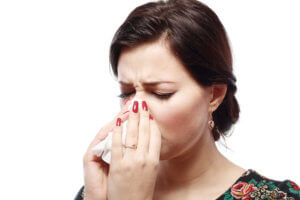
Experts distinguish between acute and chronic forms of such a pathology, each of which causes the appearance of characteristic symptoms.The main symptom of acute sinusitis is the appearance of a feeling of tension and pressure in the area of the affected sinus. In the advanced stage, this condition is complemented by the appearance of strong pain sensations that are localized in various areas of the face.
Often, the clinical picture of the acute form of sinusitis is complemented by the appearance of toothache in the upper part of the jaw, and the discomfort increases in the process of chewing food. Patients with this disease experience problems with nasal breathing, and nasal discharge is disturbing.
The very first sign of an acute form of sinusitis is the appearance of unpleasant sensations in the paranasal and nasal cavities, the strength of which gradually increases.
This pain syndrome is especially pronounced in morning time and grows in the evening.The following clinical signs of sinusitis are distinguished:
- headaches appear as a result of the accumulation of pus in the inflamed sinuses
- problems with nasal breathing are expressed in the appearance of a nasal tinge
- accompanied by the appearance of transparent mucous or yellowish-green discharge from the nose with an admixture of pus
- high body temperature usually indicates an acute form of pathology
- there is a deterioration in the general state of health, that is, the patient becomes weak, quickly gets tired and refuses to eat
When an inflammatory process develops on the mucous membranes of the sinuses of the upper jaw. The main cause of this form of pathology is considered to be an infectious process that occurs in the upper respiratory tract, as well as severe hypothermia of the body. Medical practice shows that predominantly chronic sinusitis develops with poorly treated acute inflammation of the sinuses of the upper jaw.
With this form of sinusitis, the following symptoms are usually observed:
- general weakness of the patient
- frequent headaches
- accumulation of mucus in the nasal cavity
- decrease or complete
- mucous discharge from the nose or with an admixture of pus
In chronic sinusitis, a persistent dry cough is considered a pronounced sign of pathology, which most often appears at night and is not amenable to traditional treatment. The main cause of its occurrence is considered to be pus, which flows from the affected sinus along the back wall of the pharynx.
Why is the disease dangerous?

Sinusitis is a complex and dangerous disease that must be treated. If effective therapy is not carried out, the following consequences may develop:
- severe swelling of the maxillary sinuses
- discharge of large amounts of mucus from the nose
- accumulation of purulent exudate in the maxillary cavities
- nasal breathing problems
- inflammatory process on the mucous membrane
After the treatment of the disease, patients may develop the following complications:
- the transition of an acute form of pathology into a chronic one is possible, the course of which is longer and more complex
- the result of inflammation is
- inflammation of the tonsils of the pharynx, bronchopulmonary system and other organs develops
With the transition of sinusitis to a complicated stage, the development of more serious complications is possible, among which diseases of the following organs can be distinguished:
- heart
- kidneys
- joints
- brain
In the event that the resulting complications go beyond the boundaries of the bronchopulmonary system and affect other organs, then sepsis may develop. In order to avoid such unpleasant consequences and complications of sinusitis, it is necessary to seek help from a specialist at the first signs of the disease.
Washing the nose in case of illness

One of the common ways to deal with sinusitis at home is considered to be using various means. Thanks to this procedure, it is possible to get rid of the accumulation of mucus in the maxillary sinuses, which can provoke the development of an inflammatory process and turn into pus.
In addition, washing the nose allows you to restore the full natural process of removing mucus from the nasal cavity.
To obtain the greatest effect when performing such a procedure, the following rules must be observed:
- Before washing, you need to carefully clear the nose of mucus so that it is not stuffed up. If necessary, you can use such vasoconstrictors as Rinazolin, Tizin or. The washing procedure should be started a few minutes after instillation of the solution into the nose.
- To rinse the nose, you can use a syringe without a needle or a syringe. The most convenient device is a special kettle or a pharmacy syringe designed directly for washing the nose.
- It is necessary to lean slightly over the sink, tilt your head to one side, insert the selected washing device into the nostril and begin to pour in the liquid. It should be remembered that the nostril into which the solution is injected should be higher than the second.
- It is necessary to slowly tilt the head to the opposite side, which will allow the liquid to exit their nostrils on their own. Repeat the same procedure with the second nostril.
Useful video - An effective folk remedy for sinusitis:
Features of heating the sinuses in case of illness

It should be remembered that warming up the nose with sinusitis is strictly prohibited if the disease is in an acute stage.
The fact is that exposure to warm temperatures can lead to the spread of pathogenic microorganisms throughout the body. Warming up the nose is allowed only if the patient is at the stage of recovery, and the maxillary sinuses are already free of pus.
At home, you can warm up the nose in the following ways:
- apply a hot bag of salt to a stuffy nose
- warm the nose with chicken eggs until they cool completely
- using blue lamp
At home, you can warm up the nose with steam inhalation. To do this, boil the potatoes in their skins and drain the water from it. After that, the patient should bend over the pan and exhale the vapors that come from the root crop.
It is recommended to cover yourself with a blanket or terry towel, which will create the necessary temperature regime. The duration of such inhalation is usually 10-15 minutes, and during it, the patient needs to take deep breaths through the nose or mouth.
Traditional medicine against the disease

It is possible to achieve a positive effect in the fight against sinusitis with the help of folk remedies, the effectiveness of which has been tested by many generations.
Healers recommend using various drops, decoctions and ointments, thanks to which it is possible to get rid of unpleasant symptoms and alleviate the patient's condition. The main condition for any home treatment is a thorough rinsing of the nose with a solution of sodium chloride before instillation of folk remedies.
At home, you can use the following tools:
- To wash the nose, you can prepare a decoction of chamomile by pouring several flowers of the plant with hot water. The resulting mixture should be cooled, strained and used to wash the sinuses.
- At an early stage of sinusitis, especially effective tool is considered a solution. To prepare it, 5 grams of salt are brewed in a glass of water and 15 drops of fresh propolis tincture are added to the resulting solution. Such a drug must be used to wash the nose for a week, doing the procedure several times a day.
- You can prepare drops based on honey according to the following scheme: you should grind 4 grams of celandine well and mix it with aloe and honey in equal proportions. The prepared mixture should be instilled several times a day in each nostril, 3 drops.
- To combat sinusitis at home, you can prepare a bay leaf compress. To do this, several leaves of the plant are poured with water and brought to a boil. After that, the solution should be cooled, moisten a napkin in it and apply to both sinuses for one hour. To get the maximum effect of this treatment, it is recommended to cover your face with a towel.
Sinusitis is considered a complex disease, the treatment of which must be started as early as possible.Early diagnosis of pathology allows you to avoid the development of unpleasant consequences and complications.
Inflammation of the maxillary sinuses located in the maxillary region is accompanied by thick green-yellow purulent discharge, headaches, fever and general weakness. The patient is tormented by nasal congestion and a feeling of fullness in the area where the soft tissues swell. You need to stop an acute attack with antibiotics and antiseptics, and you can treat other symptoms of sinusitis at home.
Otolaryngologist: to go or not to go
People who do not have medical education unable to make a correct diagnosis. Even if all signs point to inflammation of the maxillary sinuses, the disease should be confirmed by an otolaryngologist. The doctor takes a history and sends the patient for an x-ray to check if the pus is stagnant. If the sinuses are clogged and their contents cannot come out, the patient is prescribed a referral to the physiotherapy room, where the secretions are sucked off with a special apparatus. Additionally, antibiotics and antiseptic solutions for washing are prescribed to remove inflammation, antifungal or antiseptic, if an infection has been found in the maxillary sinuses.
The disease caused by allergies is treated with antihistamines. If necessary, the patient is prescribed painkillers. Folk methods can relieve the symptoms of sinusitis, but decoctions and other recipes should be combined with antibiotics and physiotherapy.
Warmth against inflammation
When the disease is in the acute stage, salt bags or eggs should not be used. Purulent secretions in the sinuses stagnate because swelling does not allow them to come out. Heat worsens the patient's well-being and contributes to the spread of infection to neighboring organs: ears, brain or membrane. The patient runs the risk of becoming the owner of otitis media, encephalitis or even meningitis.
It is possible to warm up the maxillary sinuses when the edema subsides, and the pus will flow out without obstacles. Heat treatment is recommended at the initial stage, or when the feeling of fullness disappears and the temperature returns to normal. There are several heating options:
- quartz blue lamps;
- hot boiled eggs;
- sand, buckwheat or salt;
- warm compresses;
- clay or paraffin.
Black radish also has disinfecting and warming properties. Depending on the method, it will take 10 or more procedures for the disease to recede and the state of health to improve.
eggs and salt
The dry ingredient should be enough for two small bags the size of the maxillary sinuses. Do not grease the pan with oil or water, heat it up, and then pour sand or buckwheat into it. Stir until product is hot. Salt should become brownish, and buckwheat almost black.
Pour the filler into bags or pieces of fabric, which are pulled together with ropes so that the dry substance does not spill out. If the salt is too hot, wrap it in a terry towel. Apply to nose and hold for at least 15 minutes.
In a similar way, the maxillary sinuses are heated with boiled eggs. Pulled out of the pan, wrapped in a towel and applied. You can also cool the product a little, peel it and roll it over the problem areas until they cool. Either of the two options gives a good result.
Paraffin and radish
If after the usual warming up the state of health does not improve, it is recommended to try the option with paraffin. Melt the substance in a water bath and apply with a culinary brush to the maxillary sinuses. You should get a centimeter layer, which is covered with wax paper on top to make it easier to remove, and wrapped with a woolen scarf. Lie with such a mask for about an hour, repeat daily.
The market sells an excellent remedy for inflammation in the maxillary sinuses - black radish. The root crop is not cleaned, only the dirt is washed off under running water. Grate the product to get a uniform mass. Take two small pieces of cotton fabric and put 2 tablespoons of radish porridge on them. Tie in the form of bags and attach to the maxillary sinuses. Lubricate the skin with vegetable oil or baby cream beforehand, because the juice burns strongly and causes irritation. Cover the bags with parchment paper and a woolen scarf. It will be hard to breathe, but you need to pat for about 10-15 minutes.
The procedure is carried out before going to bed, because after the radish you can not go out into the cold and drafts. It is impossible for the juice to fall on the mucous membrane of the eye.
Washing and compresses
Nasal passages must be cleaned before heating. The most common recipe consists of a glass of boiled water, a teaspoon of table or sea salt, 3 drops of iodine and the same amount of propolis or calendula tincture. The solution is injected into the nasal passages with a syringe or a small pear, which is designed specifically for washing the maxillary sinuses.

One nostril is plugged and the other is sucked in. Rinse until the solution runs out. You can prepare a remedy for cleansing the maxillary sinuses from herbs. Recommend stocking up:
- sage;
- horsetail;
- chamomile;
- a mixture of tansy and plantain leaves;
- St. John's wort or yarrow;
- mint and lemon balm are suitable;
- celandine and swamp cudweed.
Herbal decoctions can not be used for sinusitis, which has arisen on the background of allergies. First, they check how the body reacts to a particular plant, and then prepare tea for washing.
Other solution options
You can remove swelling and soothe inflamed mucous membranes with freshly squeezed carrot and beetroot juice. A weak solution of potassium permanganate has antimicrobial properties. No less effective is a mixture of boiled water with salt and soda: 10 g of each dry ingredient per glass of liquid.
It is recommended to try a water infusion of calendula, to which 2-3 drops of eucalyptus oil are added. Salt the solution and "inhale" 3 times a day. Instead of calendula, propolis is used: 15 drops of alcohol tincture per 200 ml of warm water. Plus a teaspoon of salt with 2 drops of iodine.
Furacilin can remove inflammation of the maxillary sinuses. Crush half a tablet and dissolve in 500 ml of boiled water. The liquid should be cooled to 40–37 degrees. It is advisable to use the entire solution at a time.
Tip: Tilt your head to one side when rinsing so that the liquid does not flow into the middle ear. Pour the solution into the nostril, which turned out to be higher. It is impossible to lie down on a bed or sofa immediately after the procedure, it is better to walk around or sit a little.
We treat sinusitis with compresses
You will need a large or medium-sized bulb. Wrap the product together with the peel in a piece of cloth and beat it with a rocking chair or hammer until it becomes gruel. Lubricate the forehead with vegetable oil, put a bag of onions on it. Protect eyes from juice with cotton swabs. Keep the compress for 5 minutes. Approximately half an hour after the procedure, an intensive outflow of pus begins.
A therapeutic compress is prepared from flour and melted pork fat. Fry a piece of unsalted fresh bacon in a pan. Sift the flour and add liquid fat to it, form a thick cake from the ingredients. Put it on the maxillary sinuses, covering with plastic wrap. Leave all night.
The third option consists of 2 crushed garlic cloves and a teaspoon of real butter, melted in a water bath. You should get a thick slurry, which is applied in a thin layer to the sinuses located under the eyes.
Fix the garlic on the face with plastic wrap, cover with a scarf and spend the whole night with such a bandage. In the morning, remove the gruel, boil a few potatoes in uniforms and breathe over the steam. Repeat the procedure for 3 days in a row, take a break for 4 days, repeat if necessary.
To stimulate the discharge of pus, it is advised to try an ointment from a tablespoon of honey, to which 10 g of fine table salt is added. The mass is applied in a thin layer to the maxillary sinuses, wrapped with polyethylene and a woolen scarf. You need to take a sitting position or walk around the room, it is forbidden to lie down. Pus will begin to come out after 2-3 hours, then the honey compress is removed.
Drops and ointments from sinusitis
Rosehip oil has soothing and wound-healing properties, so it is instilled into the nasal passages 4-5 times a day. The tool is suitable even for babies over 2 years old. Instead of oil, homemade drops are also used, which are prepared from improvised ingredients.

We treat sinusitis with honey
You will need part of the celandine juice and 2 parts of aloe with melted honey. The components, brought to a homogeneous state, are instilled three times a day. Inject 8 drops into each nostril.
The second recipe consists of strong black tea and an alcohol tincture of eucalyptus. The components are mixed in equal proportions, the same amount of honey is added and poured into a darkened bottle. Twice a day, 3 drops.
Heat an enameled bowl in a water bath. Pour a teaspoon of oil, olive will do, and if not, sunflower. Add 10 ml of honey and stir gently. Pour 10 ml of warm mixture into each nostril. Repeat the procedure three times a day after each wash.
Onion, birch tar and sunflower oil
Sinusitis is also treated with purified birch tar: 3-4 times a day, 3 drops. The procedure is carried out every other day for 2-3 weeks.
Prepare medicinal drops from propolis. You will need a piece of the ingredient weighing 40–50 g. Boil 3 tablespoons of vegetable oil, mix with propolis. Three times a day, 1 drop.
Heat 30 ml of vegetable oil in a water bath. Pour a tablespoon of freshly squeezed onion juice into it. In each nostril, 5 drops of the cooled agent are instilled. The course lasts exactly 7 days.
Ointment for sinusitis
Mix 30 g of shavings from laundry or tar soap with a spoonful of milk and vegetable oil. Add 25 ml of honey and melt all the ingredients in a steam bath. Pour in 30 ml of medical alcohol and onion juice. The thickened mass is impregnated with cotton swabs, which are inserted into both nostrils for 15-20 minutes.
An alternative recipe consists of soda, honey and vegetable oil. The components are taken in equal proportions, and swabs soaked in the agent are injected into only one nostril. If the right turn has come, you need to lie on your left side, and then vice versa. For some, natural butter helps with sinusitis. Cut off a piece the size of a pea, insert into one nostril and go to bed. The next night, treat another maxillary sinus. It will take 8 procedures.
Simultaneously with the treatment of sinusitis, it is necessary to strengthen the immune system so that the body can more easily deal with the problem. And after recovery, it is advisable to make an appointment with a dentist and seal all carious teeth that can cause a relapse.
Video: how to forget about a runny nose and sinus forever


